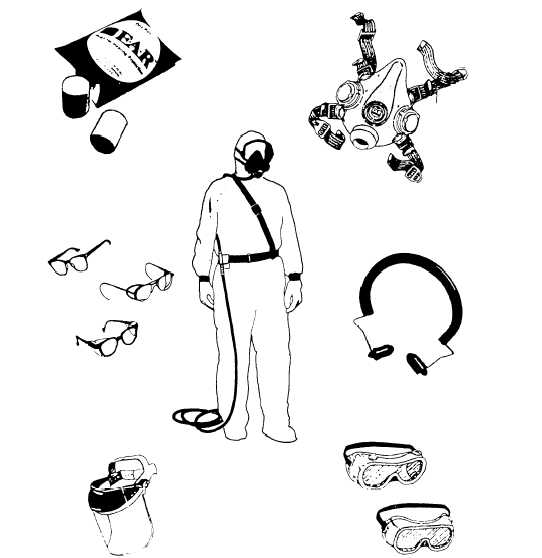| |
Figure 5-8.—Personal protective clothing and equipment.
equipment. All personnel required to wear personal
protective clothing or equipment must receive training
before first using it and annually thereafter.
Types of Personal Protective Clothing
and Equipment
We will now discuss the various types of personal
protective clothing and equipment (fig. 5-8) designed to
cover you from head to toe.
HEAD PROTECTION.— Helmets or hard hats
protect crewmembers from the impact of falling and
flying debris and from impact with low overheads. On
a limited basis, they protect personnel from shock and
burn. Metal hard hats are not acceptable for shipboard
use. Head protection is available in the supply system.
FOOT PROTECTION.— Navy life exposes per-
sonnel to a variety of foot hazards, from flight decks to
machine shops to heavy supply parts stowage areas. For
normal daily wear, personnel wear leather shoes. For
protection against falling objects, personnel should wear
safety shoes with built-in toe protection and nonslip
soles. Other types of shoes available for specialt y work
are molder’s boots and semiconductive shoes. Aboard
ship, personnel cannot wear Corfam, plastic, or
synthetic shoes in firerooms, main machinery spaces, or
hot work areas. Safety shoes are provided to military
personnel. Civilian employees are either provided safety
5-21
|

